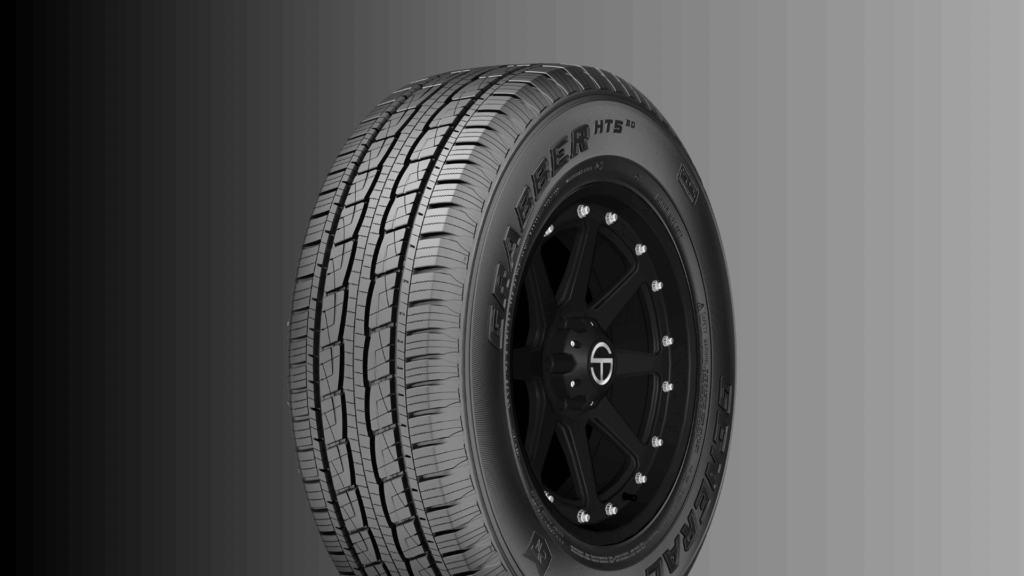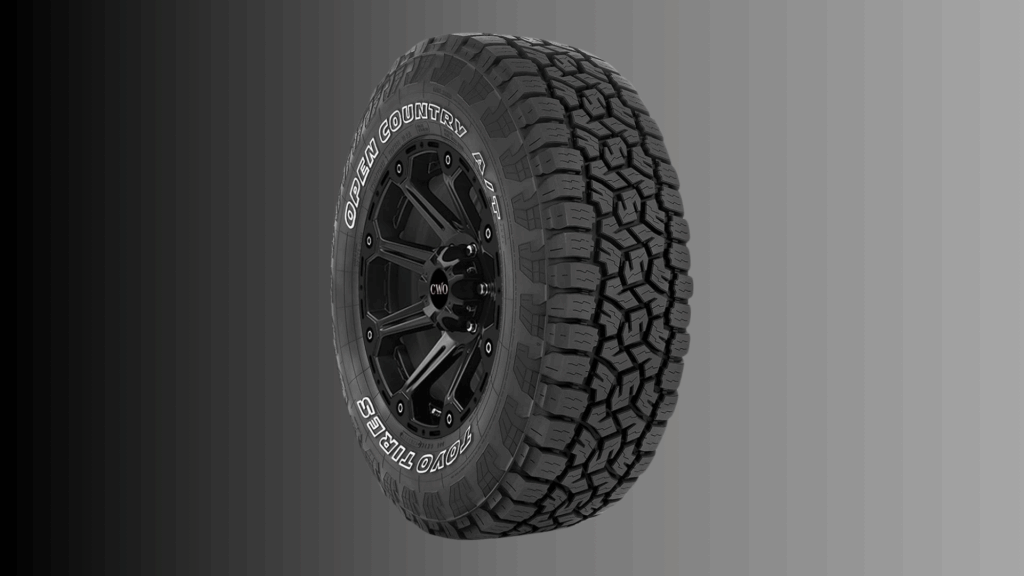Ever found yourself in the garage, squinting at those mysterious numbers on your tire sidewall?
Tire sizes can feel like a secret code, but they’re actually your roadmap to finding the perfect wheels.
Whether you’re a weekend DIY mechanic or just trying to replace a worn-out tire, understanding these numbers is crucial.
My guide will:
- Break down the 265/75R15 tire code
- Show you how to convert sizes to inches
- Help you choose the right tires confidently
Why does this matter? The right tire can improve your vehicle’s performance, safety, and fuel efficiency.
No math degree required – I’ll walk you through each step simply and clearly. By the end of this article, you’ll speak the language like a pro, saving time and avoiding costly mistakes.
Ready to decode those cryptic tire numbers?
What Does 265/75 R15 Represent?
Let me break down the tire size 265/75R15 in simple terms. Think of tire sizing like picking the right T-shirt. You need the right width, length, and fit—and tires work the same way.
- 265 – Tire Width: This number means the tire is 265 millimeters wide, which is about the length of a standard ruler. Wider tires usually offer better grip and road contact.
- 75 – Sidewall Height: This is the aspect ratio. It means the height of the sidewall is 75% of the tire’s width. So if the tire is 265 mm wide, the sidewall is about 199 mm tall.
- R – Radial Construction: “R” stands for radial, which is how most modern tires are built. It just means the internal cords are arranged in a certain way to give you a smoother, more stable ride.
- 15 – Wheel Diameter: This tire fits a 15-inch wheel. Just like a hat needs to match your head size, your tire must match your wheel size exactly.
Converting 265/75 R15 to Inches

Let’s turn those confusing millimeters into something more familiar – inches. Don’t worry, it’s easier than it sounds. Think of it like solving a simple puzzle together.
Converting Tire Width to Inches
The first number, 265, is the width in millimeters. To convert it to inches, just divide by25.4 (since there are 25.4 mm in an inch).
265 ÷ 25.4 = about 10.43 inches
That means your tire is just over 10 inches wide – kind of like the width of a medium-sized pizza.
Figuring Out Sidewall Height
Next up is the 75, which tells us the sidewall height as a percentage of the width. So, take the width in inches (10.43) and multiply it by 0.75.
10.43 × 0.75 = about 7.82 inches
That’s how tall the sidewall is—from the rim to the road. Think of it like a tall coffee cup, almost 8 inches high. This part of the tire helps with cushioning and ride comfort.
Mastering the Art of Reading 265/75 R15 Tire Size
Knowing your tire size isn’t just about numbers – it’s about finding the right fit for your vehicle, just like picking the perfect pair of shoes.
The wrong size can throw everything off and make your ride uncomfortable or even unsafe. Understanding a size like 265/75R15 helps you make smarter choices when it comes to handling, fuel economy, and speed accuracy.
Thinking about changing tire sizes? It’s best to stick close to your original specs. Big changes can mess with your speedometer, gas mileage, and even how stable your vehicle feels.
Always check your owner’s manual or use an online tire size calculator before making a switch. A slightly wider tire might improve grip, while a taller one could give better ground clearance, but each option comes with trade-offs.
My tip? Start with small changes and pay attention to how your car reacts. Little tweaks can have a big impact on performance and comfort.
Understanding the Size of a 265/75R15 Tire
Understanding tire size isn’t as complicated as it looks. Let’s break down what 265/75R15 really means in simple terms.
1. Width: About 10.43 Inches
- The “265” means the tire is 265 mm wide.
- Converted to inches: 265 ÷ 25.4 = 10.43 inches
- This is the section width (sidewall to sidewall), not the tread width.
- Tread width (the part that touches the road) is usually around 8–9 inches.
Why it matters: Width affects grip, handling, fitment in the wheel well, and fuel efficiency.
2. Sidewall Height: About 7.82 Inches
- The “75” is the aspect ratio: 75% of the width.
- 265 × 0.75 = 198.75 mm, which is about 7.82 inches.
Why it matters:
- Taller sidewalls = more comfort and off-road protection.
- Shorter sidewalls = sportier feel, less cushion.
- Impacts load capacity and handling.
3. Circumference: About 96.21 Inches
- Diameter = 30.64 inches (based on full tire height)
- Circumference = 30.64 × 3.14 = approx. 96.21 inches
Why it matters:
- Affects speedometer accuracy, transmission behavior, and fuel readings.
- An incorrect circumference can throw off your car’s readings and performance.
Pro Tip: Always check your vehicle’s manual or a trusted tire guide. Sticking close to the recommended size ensures proper handling, comfort, and safety.
What Rim Size Works Best for a 265/75 R15 Tire?
Let’s talk rim sizes. The 15 in 265/75R15 is your tire’s soulmate – a 15-inch rim. But there’s more to this relationship than just diameter. Rim width matters as much as finding the right dance partner.
For a 265/75R15 tire, you’ll want a rim between 7-8 inches wide. Too narrow? Your tire will look pinched, like wearing shoes two sizes too small.
The sidewall won’t sit right, and handling gets wonky. Too wide? It’s like stretching a rubber band – the tire becomes distorted, with uneven wear and potential safety risks.
Imagine your rim and tire as best friends. They need to complement each other perfectly. The right width ensures:
- Even tire wear
- Proper handling
- Optimal contact with the road
Pro tip: Always check your vehicle’s recommended rim width. Manufacturers know your ride best. Stick close to their guidelines, and you’ll avoid tire troubles that could leave you stranded.
Mismatched rim and tire sizes can void warranties and create unexpected handling issues. Precision is your friend in the tire world.
Comparing Alternate Replacement Sizes for 265/75 R15 Tires
Let’s talk tire alternatives that won’t send your vehicle into an identity crisis. Let’s see a quick comparison of similar sizes to 265/75R15:
| Original Size | Alternative Size | Pros | Cons | Best For |
|---|---|---|---|---|
| 265/75R15 | 31×10.50R15 | Wider footprint. Good for trucks. | Might require minor modifications | Off-road enthusiasts |
| 265/75R15 | 255/75R15 | Slightly narrower. Better fuel economy | Less grip in rough conditions | City drivers |
| 265/75R15 | 285/70R15 | More aggressive look. Slightly wider | Potential rubbing issues | Performance seekers |
Pro navigation tips:
- Use online tire calculators
- Check vehicle manufacturer guidelines
- Measure wheel well clearance
- Consider potential speedometer adjustments
Warning: Small changes can mean big differences. A half-inch variation might require:
- Suspension tweaks
- Potential rubbing
- Speedometer recalibration
Conclusion
Now that you understand how to read tire sizes, it’s not so intimidating anymore.
Those numbers on the sidewall, like 265/75R15, aren’t just random; they tell you a lot about your tire’s width, height, construction, and fit.
Knowing this helps you make smarter choices for safety, performance, and comfort. If you’re replacing tires, upgrading for looks, or just curious, you’re better equipped to talk tires with confidence.
Keep a tire size calculator handy and don’t hesitate to ask a professional when needed. Every vehicle is different, and the right tire makes a big difference in how it drives and feels.
If you’re heading into a tire shop or shopping online, you now have the knowledge to make informed decisions. Tire sizes are just another part of owning a vehicle, and now you’ve got it down.
So go ahead, take care of your ride, and hit the road with confidence.


